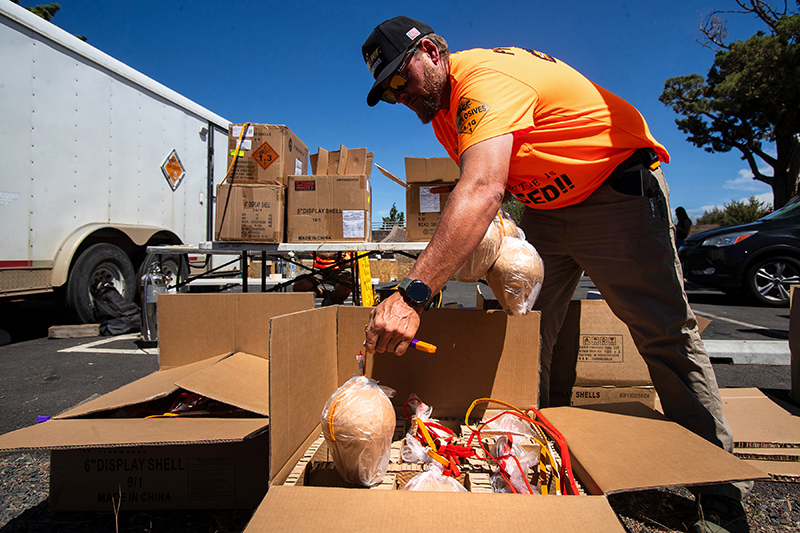Central Oregon Crossroads: Are we moving fast enough to protect our waterways?
Published 2:00 am Wednesday, March 10, 2021

- Scott Christiansen
Editor’s note: The following is part of an ongoing, twice a month series of columns regarding climate change and its ramifications for Central Oregon.
Water management conflicts are not hard to find. Globally, agriculture consumes most of the fresh water (65-90%, depending on country). This past year in Oregon, fish and farms were both in trouble. Heavy reliance on irrigation during the 2020 drought dried up Wickiup Reservoir.
Bend was established as an agricultural community. Historically, the U.S. government encouraged farmers to settle the West using incentives, such as interest-free infrastructure loan repayments for irrigation districts and repayment relief in years when farmers were under stress. With signs of trouble ahead, we are changing course in several ways, but are we doing so fast enough?
Trends depict agricultural water use in the Western U.S. According to the USDA’s Economic Research Service, inefficient flood irrigation has been decreasing and pressurized sprinkler irrigation has been increasing over the past 40 years; however, neither method is the best technology for use in Central Oregon because of seepage and evaporation from volcanic soils that are highly porous and have low water retention capacity.
Better irrigation methods
Farmers and ranchers can now invest in more efficient irrigation equipment. For example, Low-Elevation Sprinkler Application (LESA) irrigation systems improve irrigation application efficiency to as high as 97% by reducing water losses due to wind drift and evaporation from the top of the plant canopy.
By delivering water close to the ground, water is better targeted to plants so less water and energy for pumping are needed to meet crop water requirements. Irrigation equipment manufacturers and distributors have developed retrofit kits to convert existing pivots or wheel lines into LESA reconfigurations.
Subsurface drip irrigation
More efficient methods exist for intensification of hay production using subsurface drip irrigation. Netafim, one of the most advanced irrigation companies in the world, developed a subsurface drip tape that is buried 8-12 inches deep in the soil to deliver precise amounts of water and fertilizer to alfalfa that can raise production by 25-40% . It is used successfully in California where the system has shown it can pay for itself in three years.
The links
Golf courses have been criticized for their perceived negative impact on the environment. Water use for golf courses generates significantly greater economic activity compared to alternative water uses like residential lawns and even field crops; however, many courses built in the 1970s, ’80s and ’90s now have aging, out-of-date irrigation, drainage, tees, bunkers and greens that need retrofitting or replacement. Golf course designers will probably not turn to AstroTurf because plastic divots can’t be replanted and the turf radiates heat in the summer — but you might anticipate a downsizing from 18- to 12-hole courses.
The Journal of Golf Course Management wrote a technical report about water-use efficiency for golf courses. Water use on an average-sized course (103 irrigated acres) in the northwestern U.S. was 97,885,761 gallons per year. During the irrigation season in Central Oregon, usually from April 15 to Sept. 30 (168 days), this amount of water is equivalent to about 582,653 gallons per course per day. Within a 30-mile radius of Bend, there are at least 20 golf courses and others being planned that collectively consume millions of gallons of water per day.
Water savings at home
Domestic water conservation can also save large volumes of water. The Environmental Protection Agency lists several things that you can do to save water.
For example, if an average-sized lawn in the U.S. is watered for 20 minutes every day for seven days, it is like running the shower constantly for four days or taking more than 800 showers. A household with an automatic landscape irrigation system that is not properly maintained and operated can waste up to 25,000 gallons of water annually.
Nonrevenue water (NRW)
Formerly termed “unaccounted for water,” NRW is water that has been produced and is “lost” before it reaches the customer. In a study on the state of U.S. urban water use, data from over 160 drinking water or wastewater utilities in U.S. cities were collected to determine water demands. Almost 15% of water treated across the United States never reaches the consumer because of physical loss or theft. This is considered a good level compared to many other parts of the world. Fortunately, the data for Bend in its Water Management and Conservation Plan show a NRW percentage of 3.8% averaged over 2008-2015.
Summary
It appears that we are reaching the tipping point where there is no longer enough water to go around for all sectors. If the day has indeed arrived when there is not enough water for lawns, golf, hay and fish, we will need to allocate, and price water based on the highest public good. There are many ways to improve our water use if we choose to do so.








